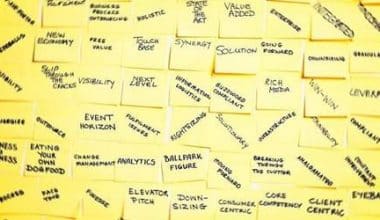Data governance is the process of keeping an eye on and managing how data is collected, stored, used, and shared within a company. It is a crucial component of any business that works with a lot of data since it guarantees the data’s availability, security, and reliability. It also makes sure that the company is following all legal and regulatory rules.
While maintaining compliance with legal and regulatory standards, a well-designed data governance framework can assist organizations in enhancing the quality and security of their data.
Organizations of all sizes and sectors rely on data to make strategic decisions and run their businesses in the modern digital world.
The use of a framework is important due to the growing volume and complexity of data. This helps to assure the accuracy, consistency, and completeness of the data while also safeguarding it from unauthorized access and breaches.
What is the Role of Data Governance?
The role of data governance includes the overall management of the availability, usability, integrity, and security of data used in an organization.
The main goal is to ensure that data is accurate, consistent, and reliable, and that it is used in compliance with legal, regulatory, and organizational policies.
This can help organizations make better decisions, improve operational efficiency, and reduce risk.
What are Types of Data Governance?
There are several types of data governance, each with its own focus and objectives. Here are a few examples:
#1. Technical
The main focus of this type includes technical facets of data management, such as data architecture, data modeling, data integration, and data quality.
#2. Compliance
This type is concerned with making sure that data management obligations under laws and regulations, such as those governing data privacy, are met.
#3. Operational
At its core, it includes the daily management and operations of data within an organization, such as data entry, data validation, data quality control, data backup and recovery, and data security.
#4. Enterprise
This type focuses on the overall management and governance of data across an entire organization.
#5. Specific data domains
Some organizations might have specific data governance for specific data domains, for example, customer, financial, or supply chain data governance.
This type of governance focuses on the specific data domain and ensuring the quality and security of the data within that domain, while also ensuring compliance with relevant regulations.
What are the 3 Pillars of Data Governance?
The 3 pillars of data governance are also known as its framework. They are a set of guidelines, policies, and procedures that are put in place to manage and oversee the collection, storage, use, and dissemination of data within an organization.
The data governance framework includes:
#1. Governance structure and organization
This refers to the roles, responsibilities, and decision-making processes that are in place to manage and oversee the collection, storage, use, and dissemination of data within an organization.
They include the development of data management policies and procedures, and the establishment of a board or committee to oversee the implementation of these policies and procedures.
#2. Data management and stewardship
This covers the processes and procedures that are in place to ensure the accuracy, completeness, and consistency of the data, as well as to protect it from unauthorized access and breaches.
It includes data entry, data validation, data quality control, data backup and recovery, and data security.
#3. Compliance and regulatory requirements
This revolves around the adherence to legal, regulatory, and industry-specific requirements related to the collection, storage, use, and dissemination of data.
It includes compliance with data privacy laws and regulations, such as the General Data Protection Regulation (GDPR) and the California Consumer Privacy Act (CCPA).
It also includes adherence to industry-specific regulations, such as HIPAA for healthcare organizations and FINRA for financial institutions.
What are Data Governance Skills?
Data governance skills are the abilities and knowledge necessary to effectively manage and oversee an organization’s data assets. These include:
- Understanding and implementing policies and procedures for data quality, security, accessibility, and compliance.
- Knowledge of data management best practices such as data modeling, data warehousing, and data integration.
- Strong communication and leadership skills to coordinate and collaborate with multiple teams and stakeholders.
- Understanding of the frameworks and methodologies.
- Knowledge of the tools and technologies.
- Familiarity with data privacy and protection regulations.
- Understanding of data lineage and data audit.
- Ability to create policies and procedures.
- Knowledge of business processes and data flows within an organization.
- Ability to measure and monitor performance.
Examples of Data Governance in Practice
Here are a few examples of data governance in practice:
#1. Data privacy
An organization may implement data governance policies and procedures to ensure compliance with data privacy laws and regulations.
Examples are the General Data Protection Regulation (GDPR) or the California Consumer Privacy Act (CCPA).
#2. Financial data management:
A financial institution uses policies and procedures to ensure compliance with financial industry regulations. An example is the Financial Industry Regulatory Authority (FINRA).
#3. Healthcare data management
A healthcare organization may implement policies and procedures to ensure compliance with healthcare regulations.
This include the Health Insurance Portability and Accountability Act (HIPAA).
#4. Supply chain data management
A manufacturing organization implements policies and procedures. This enables the organization to manage the data from its suppliers, ensure the quality and security of data coming from suppliers, and be compliant with specific industry regulations.
#5. Public data management
Organizations that work for the government use policies and procedures to keep track of the information that is shared with the public.
This is to ensure the data is accurate and reliable and to be compliant with specific regulations around public data management.
The 9 Processes of Data Governance
The data governance process typically includes the following steps:
#1. Define the scope
This step involves defining the scope of the data governance initiative, including the specific data sets and systems that will be covered by the process.
#2. Establish governance structure
This step involves setting up a governance structure and organization.
It also includes the creation of a governance board or committee and the development of data management policies and procedures that outline the roles and responsibilities of different individuals and groups within the organization.
#3. Develop data quality standards
This step involves the development of data quality standards, which are used to ensure the accuracy, completeness, and consistency of the data.
#4. Implement data quality controls
This step involves the implementation of data quality controls, such as data validation and data cleaning, to ensure that the data meets the established quality standards.
#5. Monitor and report data quality issues
This step involves monitoring and reporting data quality issues, such as data errors and inconsistencies, to ensure that they are identified and addressed in a timely manner.
#6. Develop and implement data security policies and procedures
This step involves the development and implementation of data security policies and procedures. These include guidelines for password management, data encryption, and incident response, to ensure that the data is protected from unauthorized access and breaches.
#7. Compliance and regulatory requirements
This step involves the adherence to legal, regulatory, and industry-specific requirements related to the collection, storage, use, and dissemination of data, such as data privacy laws and regulations.
#8. Data Governance Program
This step involves the development of a Data Governance program, a collection of processes, procedures, and standards that organizations use to manage the availability, usability, integrity, and security of the data they use in the business.
#9. Continuous monitoring and improvement
This step involves ongoing monitoring and evaluation of the data governance process to identify areas for improvement and to ensure that the process remains effective and up-to-date.
What is Data Governance in ETL?
Data Governance in ETL (Extract, Transform, Load) is the set of processes and procedures that organizations use to ensure the quality, security, and compliance of data as it is extracted from various sources, transformed to meet the organization’s needs, and loaded into a target system such as a data warehouse or a data lake.
The main goal is to ensure that the data is accurate, complete, and consistent and that it is protected from unauthorized access and breaches, while also ensuring compliance with legal and regulatory requirements.
What is Data Governance Tools?
Data governance tools are software applications that help organizations manage and oversee the collection, storage, use, and dissemination of data within an organization.
These tools can be used to automate and streamline various aspects of the process, such as data quality control, data security, and compliance with legal and regulatory requirements. Here are a few examples:
#1. Data Quality Tools
These tools help organizations to identify, measure and improve the quality of their data, such as data profiling, data cleansing, data standardization, data validation, and data reconciliation.
#2. Metadata Management Tools
These tools help organizations to manage and organize the metadata associated with their data, such as data dictionaries, data lineage, data catalogs, and data mapping.
#3. Data Governance Platforms
These platforms provide a centralized, web-based interface for managing and governing data across an organization, such as data governance workbench, portal, and dashboard.
#4. Automation Tools
These tools automate processes, such as data lineage tracking, data quality monitoring, data cataloging, and data classification.
#5. Compliance Tools
These tools help organizations to ensure compliance with legal and regulatory requirements related to data management, such as data privacy laws and regulations.
#6. Analytics Tools
These tools provide analytics capabilities to help data governance teams to monitor data quality, identify data patterns and trends, and track data lineage and lineage.
Data Governance vs Data Management
Data governance and data management are related but distinct concepts.
The concept of data governance refers to the overall management of the availability, usability, integrity, and security of the data used in an organization.
It includes the processes, roles, standards, and metrics that ensure data is used in an appropriate and consistent manner.
Data management, on the other hand, refers to the specific practices and systems used to acquire, store, protect, preserve, and deliver data. This includes tasks such as data modeling, data warehousing, data quality, and master data management.
In summary, data governance provides the framework for making decisions about data, while data management deals with the day-to-day tasks of working with data.
Conclusion
In conclusion, data governance is a crucial aspect of managing and utilizing data in any organization. It ensures the availability, usability, integrity, and security of data, and supports the alignment of data with business objectives.
Effective data governance involves creating processes, roles, standards, and metrics to manage data. It also involves collaboration across different departments and stakeholders.
RELATED ARTICLES
- SOLE PROPRIETORSHIP VS LLC: What is Better? (What You Should Know)
- BUSINESS PROCESS AUTOMATION: Definition and Top Software Tools
- Marketing Automation: Best Marketing Automation Software and Tools
- DATA STRATEGY: 7 Component of Data Strategy every Compound needs






